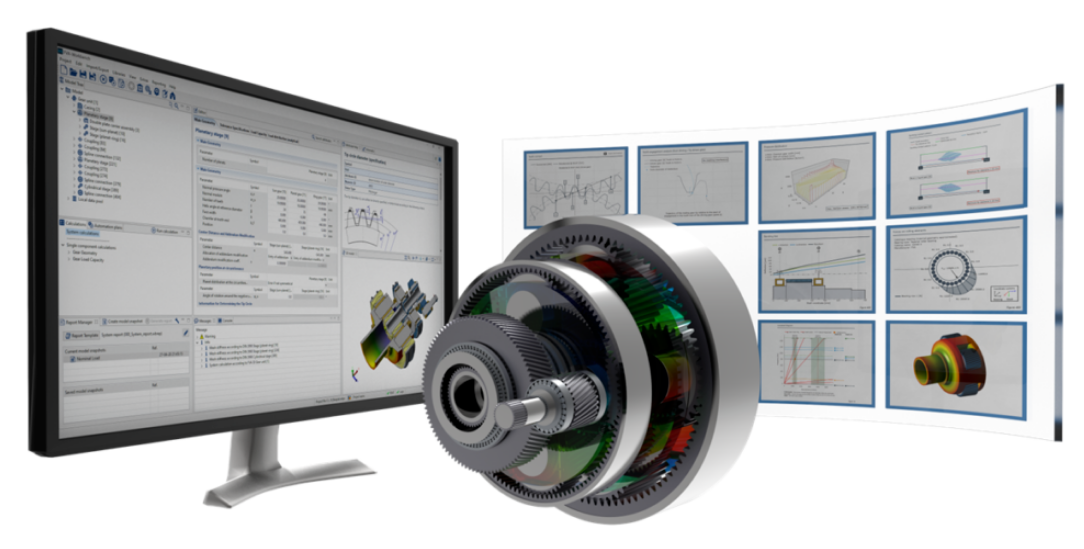Welcome to Sino Bearings web
24x7 HOTLINE:+86-28-81454188

 NEWS
NEWS
The FVA-Workbench makes mass calculations easy.
Stöber Antriebstechnik GmbH + Co. KG rely on the FVA-Workbench for dimensioning and verification of their drives. The calculation and simulation software allows Stöber engineers to develop their innovative gear unit solutions more quickly and efficiently. The result: higher quality products.
Stöber uses the FVA-Workbench for dimensioning and verification of their standard gear units as well as customized applications and special gear units. A wide range of design objectives are considered, such as load capacity, excitation of vibrations, power loss, and efficiency. Designing modular planetary gear units involves the planetary gear unit stages of an entire series, consisting of different dimensions and gear ratios. With the FVA-Workbench’s integrated scripting feature, these tasks can be implemented quickly and without special programming knowledge. Thus, countless calculations can be carried out, that would be very time-consuming without suitable software.
Scripting Makes it Easy to Perform Mass Calculations
For the design of planetary gears, Stöber’s engineers first consider the macrogeometry taking various restrictions into account, such as installation space, manufacturing, and cost-effectiveness. Characteristics such as load capacity, power loss, or vibration are largely influenced by the gearing geometry. This development step is crucial for the excellent operating characteristics of Stöber drives. Customer-specific requirements can also easily be included in the design.
The possibility of performing mass calculations during gear unit design helps engineers to determine perfect gear unit solutions. In the FVA-Workbench, the integrated scripting feature is used to perform mass calculations. In a preparatory step, the parameters to be varied (such as the helix angle, module, center distance, profile offset, and load information) are pre-defined in an Excel spreadsheet. The script then prepares a calculation plan and executes the mass calculations for each variant one-by-one. Scripting uses a pre-defined FVA-Workbench model, which is manipulated for each respective variant calculation. This way, several thousand variants can be calculated automatically within a very short time. The FVA-Workbench’s excellent HTML-based reporting feature is used to evaluate the calculations. This format allows the engineer to select the results to be evaluated. The data can also be visualized and saved. Time-consuming searching through overflowing PDF files is no longer necessary. The scripting feature also makes it easy to export results to Excel for further evaluation.
The microgeometry is designed similar to the macrogeometry. Flank and profile modifications are varied, pre-defined in an Excel spreadsheet, read by the FVA-Workbench, and processed by the scripting tool. Figure 3 shows an example of two calculation variants from an FVA-Workbench report, with and without flank modification. Bearing and component stiffnesses can of course also be included in the calculations.
The FVA-Workbench includes several options for considering the planetary carrier stiffness. Early in the design phase, the approximate planetary carrier geometry can be predefined, exported via CAD interfaces, and configured by the engineer for production. Once the finished planetary carrier is available as a CAD component, it can be imported into the FVA-Workbench and meshed using internal tools. No specialist FE calculation knowledge is required, and comprehensive user guidance guarantees reliable results. The FE mesh can then be evaluated and optimized as necessary using FVA-validated methods. Alternatively, FE meshes of existing models can be loaded.
The FVA-Workbench can also be used to evaluate the local pressure distribution, with clear 3D visualization. Figure 4 shows an example of the comparison of two calculation variants, with and without profile modification. In addition to the local load distribution, several other characteristics can be calculated and used to make statements about the operational performance of individual components as well as the entire system.
A solution for reliable and efficient product development
What used to require serial control of individual calculation cores with in-house developed software now takes place completely within the FVA-Workbench. This has greatly simplified integration and maintenance of STOBER’s calculation landscape, allowing them to focus on their core business while also achieving a significant gain in performance in gear unit design. With its integrated scripting feature, the FVA-Workbench is perfect for designing entire modular systems. Powerful visualization and HTML-based reporting offer almost limitless possibilities for comparing individual calculation variants.